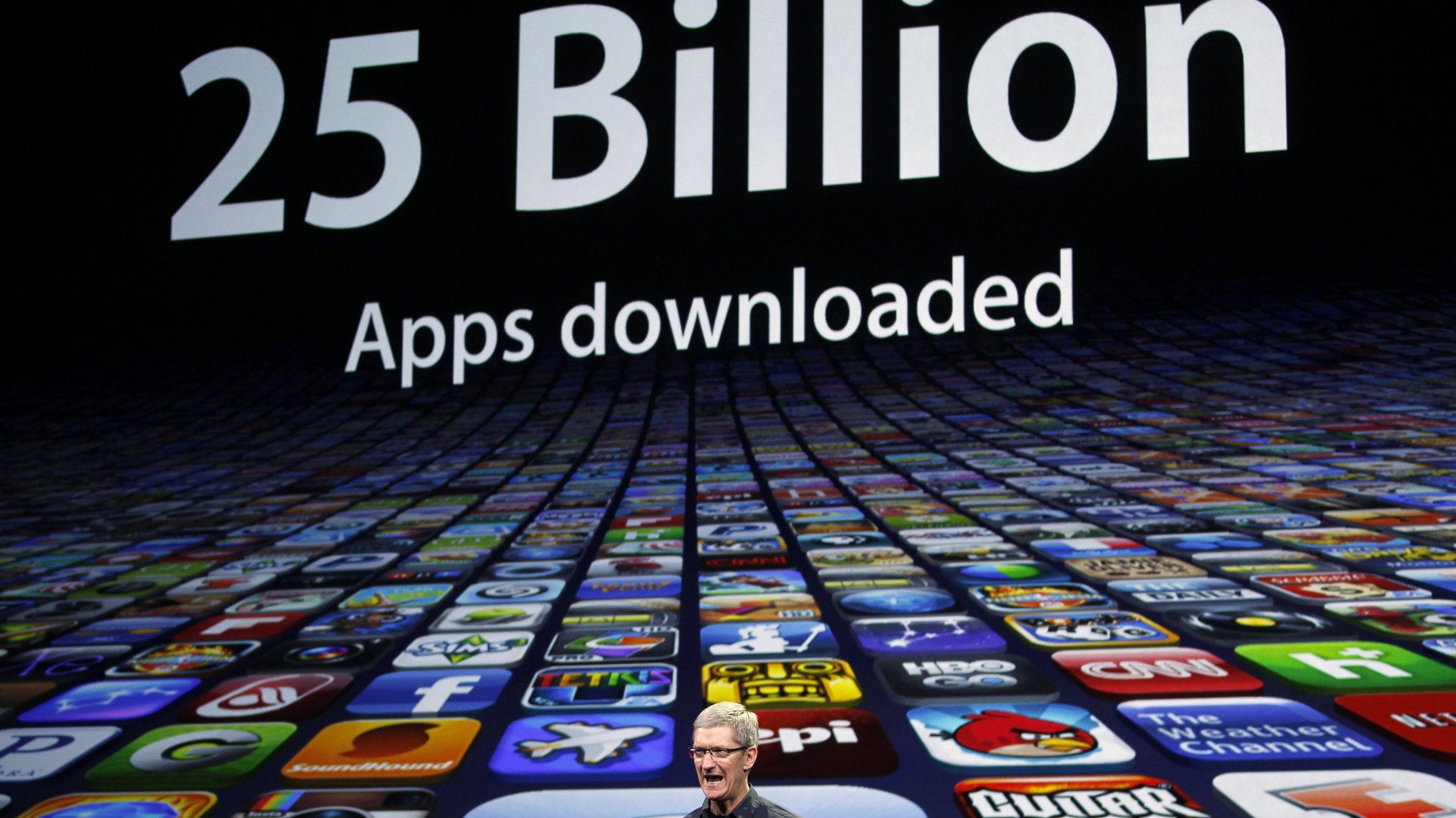The amount most people are willing to pay for an app is $0—until they’ve actually downloaded it
Now that more than half of all iPhone users have downloaded and perhaps even figured out iOS 7, users are busy re-downloading their favorite apps. Many of those apps have been substantially re-written for the new operating system, a process that costs time and money. That’s why some apps, like Clear, a to-do list app, are requiring users to buy the app again, in effect punishing older users for wanting to upgrade. That’s where the trouble begins. Users don’t like paying for apps in the first place. The chances they will pay for an app a second time are slim.


Now that more than half of all iPhone users have downloaded and perhaps even figured out iOS 7, users are busy re-downloading their favorite apps. Many of those apps have been substantially re-written for the new operating system, a process that costs time and money. That’s why some apps, like Clear, a to-do list app, are requiring users to buy the app again, in effect punishing older users for wanting to upgrade. That’s where the trouble begins. Users don’t like paying for apps in the first place. The chances they will pay for an app a second time are slim.
Marco Arment, who made Instapaper, which allows its users to save articles for later reading, argues that mobile developers need to re-think how they make money off their apps. Arment found that people were more willing to pay for Instapaper after he killed a free version he had published for people to try it. That worked because there weren’t many comparable apps to his. But with most apps, whether it is a game, a to-do list or a camera filter app, people will just settle for the next best thing if it’s free. Moreover, many users seem to think that apps come from Apple, not independent developers, Arment writes on his blog: “Professionals, including my lawyer, accountant, and doctor. Relatives. Everyone. It’s therefore non-obvious [to them] why I need to charge money, and it’s not widely understood that I get most of that money.”
The stranglehold of free
And the competition is immense. In July, free apps were downloaded 1.84 billion times from the iOS app store, according to Priori Data, a research firm. By contrast, iPhone users downloaded a mere 119 million paid apps. In other words, just over 6% of all apps downloaded were paid for. A report out last month from VisionMobile, another research firm, estimated that more than half of revenues made by app developers don’t come from the app store at all. Instead, it is enterprise customers who keep developers afloat.
But not everyone is able to serve the business-to-business market. Nor do all developers have the luxury of being able to pull free apps that offer what they do from the app store. Yet few developers, especially new ones, can afford to stick up a big paywall in the hope that some people will take a chance on their app. And despite the nominal cost of most apps (around $1), users are reluctant to spend blindly in the hope that it will be worth it (though personal recommendations go a long way).
But up-selling works
App makers need not despair. The “freemium model,” which allows users to download the app for free and then pay for add-ons, is popular and growing. Indeed, Candy Crush Saga maker King.com pulls in over $600,000 every day with this model and is now filing for an IPO. “The market has shown that… smart use of in-app purchase in a free app is likely to make more money,” writes Arment. “Over time, this trend has only become stronger and more clear.”